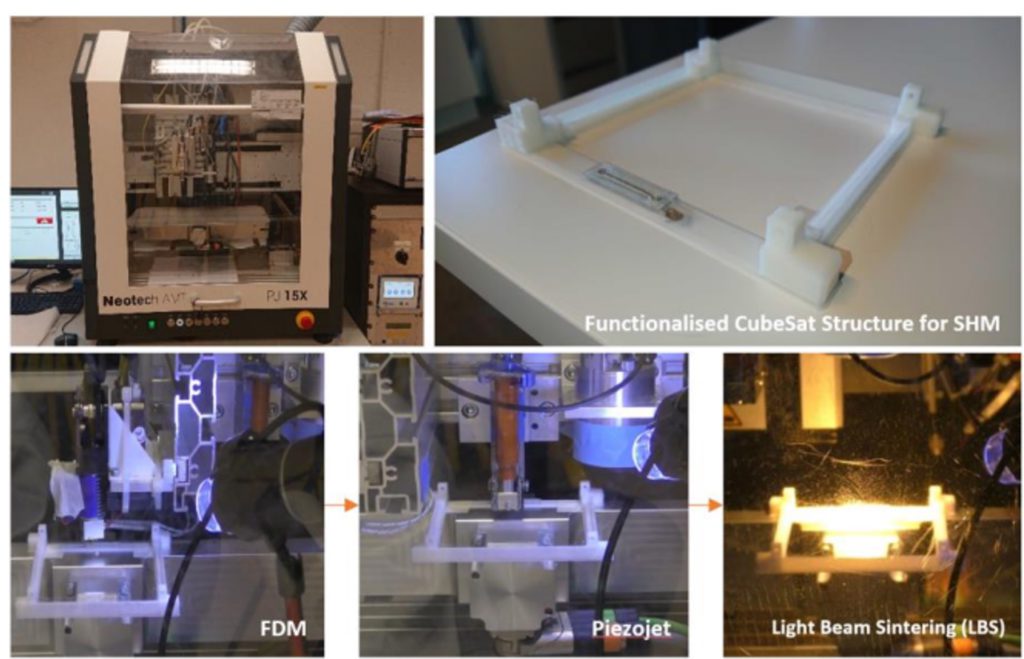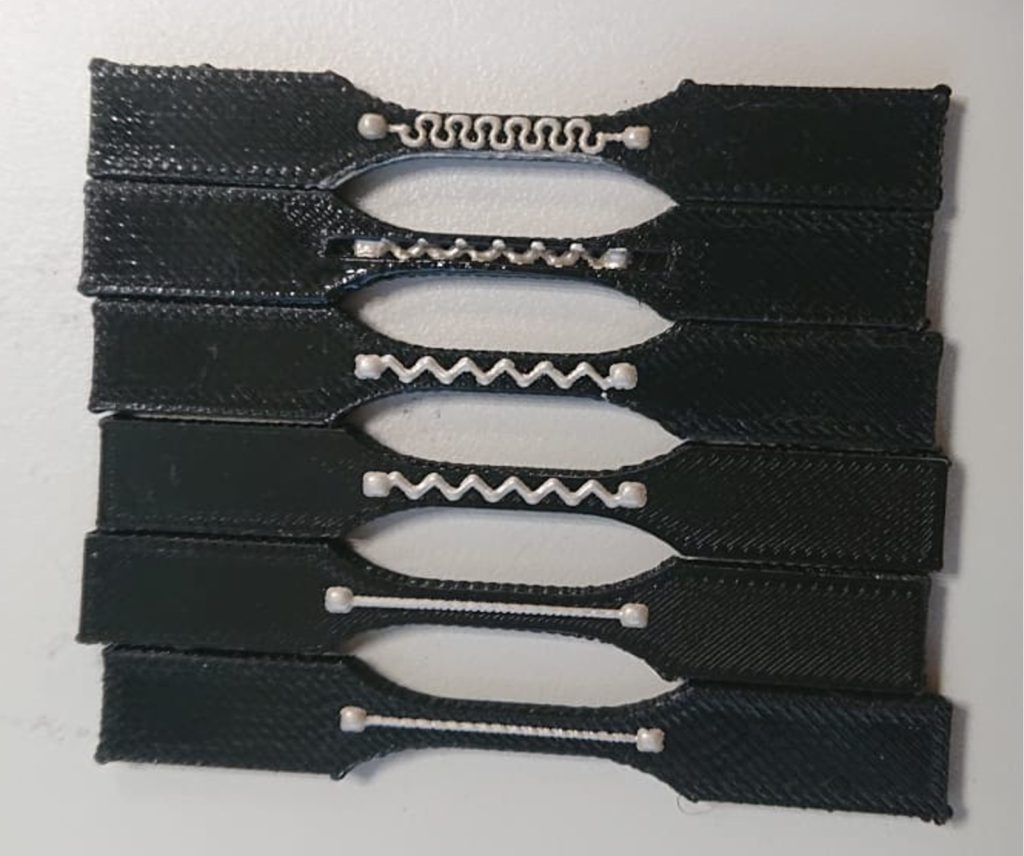Hybrid Electronic Printing: 3D Printing of Sensors
Key Information
Hybrid electronic printing of sensing structures on prefabricated and additively manufactured products
Problem Statement
Non-destructive testing (NDT) of composite structures is costly which have led many to investigate the use of embedded sensing technologies for structural health monitoring (SHM). In the niche nanosatellite market, the high cost of sending material into space could be ameliorated by extending the functionalities available in each mission. In-situ manufacturing and resource utilisation like additive manufacturing (AM) reduce the redundant component mass whereby a single common material can be utilised, enhancing mission capability by promoting more efficient use of resources. The current structure also limits the use efficiency of the available volume. Hence, the functionalisation of structures with integrated sensing would allow for enhanced mission returns.
Objective
The primary objective for the project was to evaluate and define a process for hybrid electronic printing of sensing structures on prefabricated and additively manufactured products. Sensing or sensors for the practical case of this investigation, is the detection of strain through strain sensitive patterns/circuits. These sensing structures are easily integrated into readily available electronic infrastructures (not needing unique interface development). Investigations were also conducted on the ability to embed the sensor within a structure rather than surface printing.
Key Benefits/Outcomes
The team has developed techniques for printing of circuitry on prefabricated and additively manufactured structures
Printing process for various sensor geometries and structures were successfully implemented.
Functionalisation of sensors to be applicable to more than one substrate
Full additive manufacturing of a functionalised self-sensing structure was demonstrated.
The process showed good repeatability and reproducibility across a wide variety of substrate choices. However, substrate material choice is one of the key decision factors on the feasibility of the concept as it affected mechanical compatibility of the article and precision of the sensing element.


